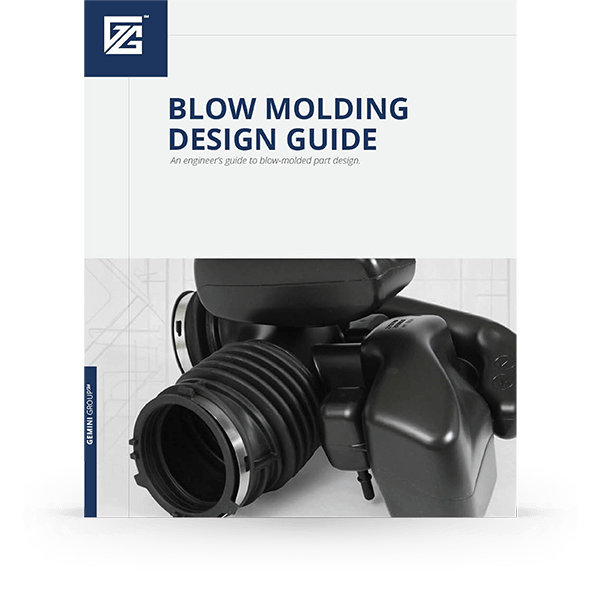Regency
Extrusion Blow Molding Design Guide
Are you new to blow molding and don’t know where to start with your part design? This free Blow Mold Design Guide is for you! Created by engineers, for engineers, this guide is the ultimate starting point to kick off a successful product design for the extrusion blow molding process.
Technical blow mold design done right.
Learn the guidelines for designing a blow molded product — from the perspective of an experienced engineer. Simply fill out the form and we’ll send a link to your inbox immediately!

GET YOUR FREE COPY TODAY!
"*" indicates required fields
Insider’s Guide to Blow Mold Design
If you’ve been tasked to design a hollow part for high-volume production (3,000+ parts per year), you’ve come to the right place. The blow molding process allows for complex hollow parts with tight tolerances to be produced at a lower cost and with faster cycle times than other molding methods such as rotomolding. It’s no wonder so many engineers are turning to blow molding to solve their high-volume production needs.
Design is the key driver of the cost and quality of custom molded parts. It has the power to give your company a competitive advantage or it can bring your project to a screeching halt. But where do you begin with your blow molding design?
You may have questions such as:
- Will blow molding work for my part?
- What does the blow molding process look like?
- What special design considerations do I need to make?
We were there once, too. That’s why we created the Blow Molding Design Guide. It provides the basic guidelines for designing custom blow molded plastic parts for the injection, stretch, and extrusion blow molding methods – from the perspective of an experienced molder.
You’ll learn how to optimize your part design in the following key areas:
- Material selection
- Blow ratios
- Draft
- Radii and corners
- Ribs and tack-offs
- Shrinkage
- Insert molding
- Texture
- Pinch Design
- Secondary Operations
This guide isn’t exhaustive; the amount of information available is simply too great. However, it serves as a starting point to better understand what goes into the blow mold design process. Simply fill out the form on this page to claim your copy today!